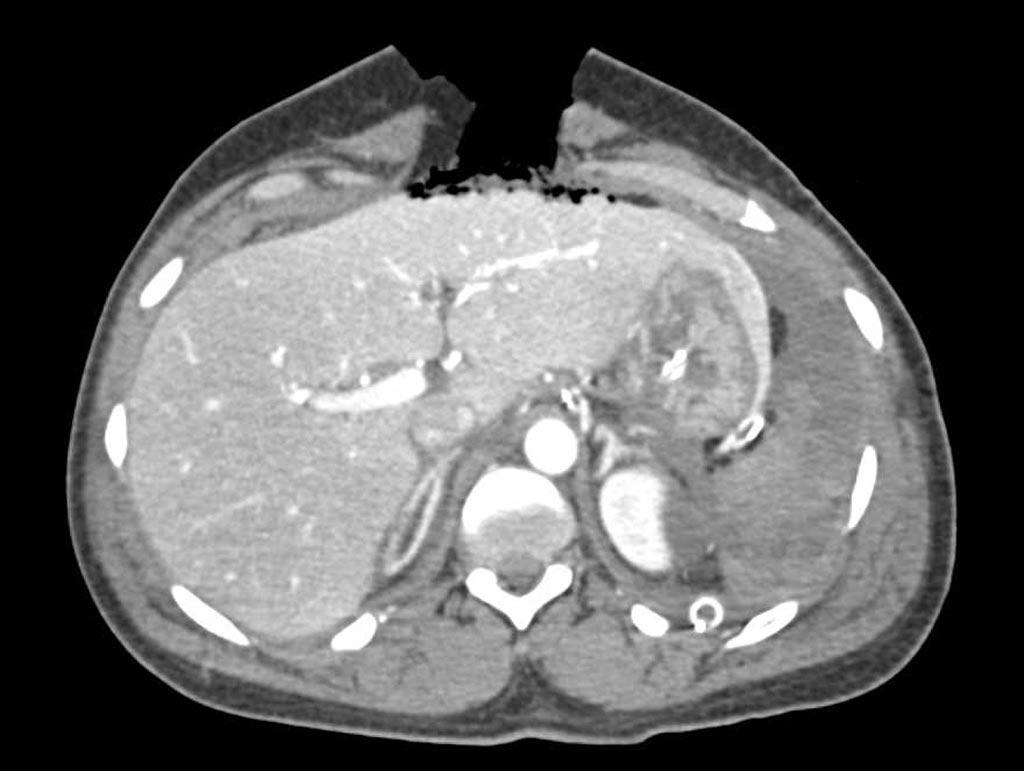Single-Contrast CT Sufficient to Detect Bowel Injuries
By MedImaging International staff writers
Posted on 07 Mar 2018
A new study shows that single-contrast computerized tomography (CT) can spot penetrating abdominopelvic trauma with accuracy comparable with that of triple-contrast CT.Posted on 07 Mar 2018
Researchers at Barnes‐Jewish Hospital (St. Louis, MO, USA) and Washington University in St. Louis (WUSTL; MO, USA) conducted a retrospective study involving 274 patients (median age 27 years old) who presented at the emergency department (ED) with penetrating abdominopelvic trauma, of which 77% sustained gunshot wounds (GSWs). All patients underwent an abdominopelvic CT using a single intravenous (IV) contrast agent, and had surgery performed thereafter. Electronic medical records (EMRs) were then reviewed to assess the accuracy of the CT in diagnosing bowel injuries.

Image: A CT image of an abdominal gunshot wound (Photo courtesy of Ctisus.com).
The results revealed that CT identified bowel injury in 173 cases, whereas surgery revealed bowel injury in 162 cases. Single-contrast CT had 142 true-positive, 31 false-positive, 81 true-negative, and 20 false-negative cases, resulting in a sensitivity of 88%, a specificity of 72%, a positive predictive value of 82%, and a negative predictive value of 80% for detecting bowel injuries. CT had the highest sensitivity and specificity in patients with multiple GSWs, and those with injuries to the stomach and rectum. The study was published on February 12, 2018, in the American Journal of Roentgenology.
“Many centers advocate use of triple-contrast (IV, oral, and rectal) CT for assessing hemodynamically stable patients with penetrating abdominopelvic trauma. Enteric contrast material has several disadvantages, leading our practice to pursue use of single-contrast IV CT,” concluded lead author Hamza Jawad, MD, of WUSTL, and colleagues. “With accuracy comparable with that reported for triple-contrast CT, single-contrast CT could show bowel injuries in patients with penetrating abdominopelvic trauma.”
Penetrating injuries account for a large percentage of visits to EDs and trauma centers worldwide. CT is now considered an indispensable tool in the evaluation of many patients who are hemodynamically stable, have no clinical indication for exploratory laparotomy, and are candidates for conservative treatment. Triple-contrast (or multidetector CT) may depict the trajectory of a penetrating injury and help determine what type of intervention is necessary on the basis of findings such as active arterial extravasation and major vascular, hollow viscus or diaphragmatic injuries.














